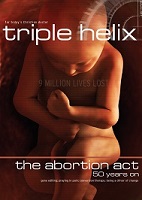ISM: In the Service of Medicine
It was not until November 1952 that the first edition of a 'periodical' was sent to members as 'Letter No 1'. It included an article, reprinted from a US translation from the French, by Paul Tournier, on doctors' matrimonial problems, comments on the Royal Commission on Marriage and Divorce, and a book review on miraculous healing.
How did the title express CMF's concept? The Christian faith saw itself as a servant of the practice of medicine, that John 13 servant spirit summed up later by the towel and basin logo of ICMDA, the International Christian Medical and Dental Association.
Initially printed annually and eight pages in length, ISM became more regular and grew in pagination. By 1956 it had grown to 12 pages with a supplement. By 1986 it had grown to 40 pages with a colour cover, and was ready to undergo its first major transformation.
JCMF: The Journal of the Christian Medical Fellowship
This newly titled, new-look stab at a more prestigious and more academic-feeling journal arrived in October 1986. I notice it included a long letter on the controversies of alternative medicine from one 'Andrew Fergusson, Bromley'; a personal view but written following lengthy investigations by the Medical Study Group.
Averaging 32 pages, JCMF came out quarterly, with its front cover colour coded for the seasons - green for spring, pink for summer, brown for autumn, and blue for winter. Its content had to be both 'Christian' and 'medical'. This still left plenty of room for manoeuvre, and the ethos was governed as now by the following guideline: 'Contributors enjoy a reasonable liberty of expression. The only requirement was for articles to be consonant with the Christian faith as recorded in the Bible'.
Being involved with production when I joined the staff, I don't think ever-busier CMF members particularly appreciated these branding changes. Many continued to call it ISM anyway! Anxious to produce something more eye-catching and perhaps attractive to colleagues outside faith, work began in the mid-90s on producing a full colour, fully illustrated magazine.
The short life of Rx
There was much debate about the target readership and the range of content, but the ethos of something medical and biblically Christian was never questioned. John Martin, currently CMF's Head of Communications and then a neighbour in Partnership House, came alongside and professional designers joined the informal team. We had a lot of fun and various design options were piloted regionally and at conferences. The biggest debate concerned the title - what could CMF call its new baby?
At a time when snappy ambiguous words were in vogue in branding (Ford for example calling its new small car simply Ka) the outright winner rapidly became Rx, with a strapline Christian perspective for health professionals. Rx had historically been medical shorthand for a prescription, from the Latin recipe, 'take that'. It was short and quirky; we loved it.
We were ready to launch Rx in the summer of 1997, when to our horror on 6 April 1997 the Sunday Telegraph newspaper pre-empted us with its intended (though very short lived) regular colour supplement on health matters called - Rx! The design features recognisably echoed ours, and we concluded pre-publication plagiarism. Complaint produced an entirely predictable response, and we were forced to delay and rethink.
Triple Helix: what's in a name?
Reporting the problem at General Committee in summer 1997, there was a lively discussion. We went back to CMF's double helix logo, and suddenly a surgeon suggested Triple Helix. It clicked immediately. Ecclesiastes 4:12 states 'Though one may be overpowered, two can defend themselves. A cord of three strands is not quickly broken.' It was quirky and appealing and lent fascinating visual possibilities to our designers. Triple Helix was born.
The intention was to engage more readers, to recruit, and to be a multidisciplinary magazine exploring questions within the context of healthcare. Initially quarterly, the full colour 24-page magazine was reduced to three editions a year in 2007. Despite rising pressures on the reading time of us all, Triple Helix continues to be globally influential, with more than 4,000 copies going to more than 68 countries around the world. It is also available free online with an even bigger readership.
What will happen in the future? Only God knows, but 'A cord of three strands is not quickly broken.'
Andrew Fergusson was CMF General Secretary 1989-1999 and later was CMF Head of Communications 2006-2011.
































